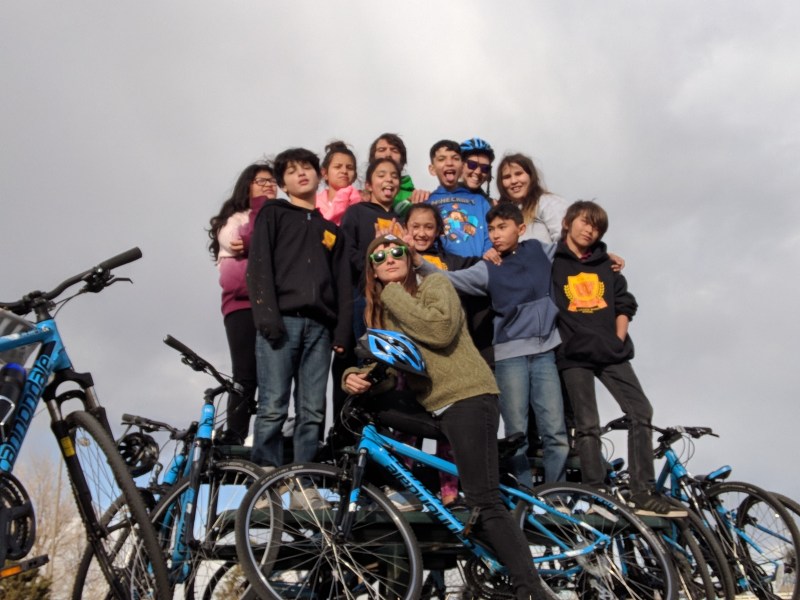These Young Cyclists Don’t Bike to School. Here’s Why.

None of the students at the West Leadership Academy high school participated in National Bike to School Day today, not even those who are part of a bicycle club that took them to the National Youth Bike Summit in New York this February.
“There’s no bike rack,” said Francisco Samayoa, a 7th grade student at the school near Sunken Gardens Park. “The roads are not safe. And there’s not bike lanes.”

Samayoa is one of 36 students who take part in a bike program at the school organized by the nonprofit Mile High 360. The group takes students on recreational rides throughout the city. Despite their commitment to biking, many say they’ve tried to figure out a way to bike to school, but they found no good options.
“I was trying to look up a route,” said Aria Spears, a 9th grader who wanted find a way to school from her home in the Westwood neighborhood of Lakewood. “But it took me way out of my way, and it would have taken well over three hours to get there.”
These students live on the west side of I-25. The freeway is a dividing line, they say, a point where the bike infrastructure they use in central Denver suddenly stops.
“If you go to the west side of I-25, there’s nothing. Absolutely nothing,” said Ana Padilla, a ninth grader. “I’ve been looking around and I can’t find a single bike path.”

A map of Denver bike infrastructure shows that they could cross I-25 on a shared sidewalk on Alameda Ave. But that street is one of Denver’s deadliest and it has no bike lane before or after the shared sidewalk. If the students did want to use it, they would have to cross over to other streets in hopes of finding a nearby bike lane.
Things on the west side of Denver could change, but it may take a while.
In the city’s Denveright plans for the next 20 years, the city proposed adding two bike lanes that would make crossing I-25 easier for the students. But even with Denver’s plans to build 125 miles of bike lanes in the next five years, the upgraded bike infrastructure isn’t likely to get them to school before they graduate.
For Padilla’s grandparents, that means driving her to school at 7 a.m.
“It’d be great to bike to school,” she said. “It would allow my elderly grandparents to sleep-in and get the well deserved retirement they need.”



